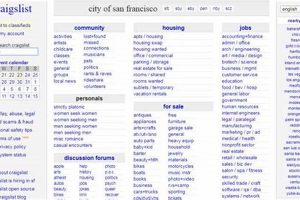Short-term hotel rentals provide access to amenities and accommodations for brief periods, often less than a standard overnight stay. This can include utilizing a guest room or suite for daytime work, relaxation, or special occasions. For instance, travelers with long layovers might seek a comfortable place to rest and refresh, or business professionals could book a space for meetings or focused work away from the office. Likewise, individuals might reserve facilities for a few hours to prepare for or unwind after nearby events.
The availability of short-duration hotel stays offers flexibility and convenience, catering to evolving traveler needs and workstyles. This approach allows individuals to maximize their time and comfort, offering respite and resources without requiring a full night’s booking. Historically, the hospitality industry primarily focused on overnight and extended stays. However, increasing demand for flexible arrangements has driven the emergence of this service model, providing an alternative for contemporary lifestyles.
The subsequent sections will delve further into specific use cases, advantages, and practical considerations for those seeking short-term access to hotel accommodations. This includes exploring pricing models, available amenities within these arrangements, and how to locate and book such services effectively.
Tips for Utilizing Short-Term Hotel Stays
Maximizing the benefits of short-term hotel rentals requires careful planning and consideration. The following tips offer guidance for optimizing these stays.
Tip 1: Clarify Booking Policies. Policies regarding check-in/check-out times and available amenities for daytime bookings can vary significantly between hotels. Confirming these details in advance ensures a smooth and productive experience.
Tip 2: Consider Amenity Access. Not all amenities offered to overnight guests are necessarily available for shorter stays. Confirm access to facilities like fitness centers, pools, and business centers beforehand.
Tip 3: Compare Pricing Structures. Hotels utilize different pricing models for daytime rentals. Some offer hourly rates, while others provide half-day or block packages. Comparing rates ensures cost-effectiveness.
Tip 4: Explore Day Pass Options. Some hotels and resorts offer dedicated day passes granting access to specific amenities without requiring a room booking. This can be a cost-effective alternative for those primarily seeking leisure facilities.
Tip 5: Leverage Loyalty Programs. Existing hotel loyalty programs may provide preferential rates or additional benefits for daytime rentals. Utilizing these programs can enhance value.
Tip 6: Communicate Specific Needs. Clearly communicate any specific requirements, such as meeting room setups or accessibility needs, during the booking process to ensure the hotel can accommodate them.
Tip 7: Factor in Location and Accessibility. Choose a hotel with convenient access to transportation, meeting venues, or other relevant destinations based on the purpose of the stay.
By considering these tips, individuals can ensure their short-term hotel stay is productive, comfortable, and aligns with their specific requirements.
In conclusion, the flexibility and convenience afforded by short-term hotel rentals represent a valuable resource for travelers and professionals alike.
1. Daytime Bookings
Daytime bookings represent the core transactional element of the “hotels for a day” concept. They facilitate access to hotel accommodations and amenities for durations shorter than a typical overnight stay. The availability of daytime bookings directly addresses the evolving needs of individuals seeking temporary spaces for work, rest, or special occasions. For instance, a business traveler might book a room for a few hours between meetings to conduct focused work, while a family might secure a space to refresh and relax during a long layover. The increasing prevalence of remote work and flexible travel schedules further underscores the importance of daytime bookings as a hospitality offering.
The practical significance of understanding daytime bookings lies in recognizing their potential to optimize time and resource utilization. They provide a flexible alternative to traditional overnight stays, allowing individuals to access desired amenities and services precisely when needed. This can be particularly beneficial for those attending conferences, participating in daytime events, or seeking temporary workspaces in unfamiliar cities. Furthermore, hotels benefit from increased occupancy and revenue diversification by offering daytime bookings, catering to a broader customer base beyond traditional overnight guests.
In summary, daytime bookings form the foundation of the “hotels for a day” model. They provide a valuable solution for individuals seeking temporary access to hotel services, offering flexibility, convenience, and cost-effectiveness. The growing demand for such arrangements reflects a shift in how individuals utilize hospitality services, prompting the industry to adapt and innovate to meet these evolving needs. The continued development and refinement of daytime booking strategies remain crucial for optimizing both customer experience and hotel operational efficiency within the evolving hospitality landscape.
2. Short-term stays
Short-term stays represent a pivotal component of the “hotels for a day” concept, signifying bookings made for periods shorter than the standard overnight duration. This model accommodates evolving needs, offering flexibility for those requiring accommodations for a few hours rather than a full night. A causal link exists between the rise of short-term stays and the changing dynamics of travel and work. Increased business travel frequency, remote work arrangements, and the desire for enhanced flexibility have fueled demand for accommodations tailored to shorter durations. For instance, professionals might require a workspace for a few hours between meetings, or travelers might seek a place to rest during a long layover. Short-term stays directly address these requirements, providing a tailored solution.
The availability of short-term stays significantly impacts the practicality of “hotels for a day.” It expands accessibility, allowing individuals to utilize hotel facilities and services as needed without committing to a full night’s cost. This can be particularly advantageous for those attending conferences, participating in daytime events, or requiring temporary workspaces. Hotels, in turn, benefit from increased occupancy rates and diversified revenue streams. Consider a traveler arriving early for a conference. A short-term stay allows them to check in, refresh, and prepare for the event, maximizing productivity. Similarly, a local professional could book a short-term stay for a quiet workspace to conduct focused work or client meetings.
In conclusion, short-term stays function as a crucial element within the broader “hotels for a day” framework. They facilitate access to accommodations and amenities for specific timeframes, aligning with the dynamic needs of contemporary lifestyles. This approach benefits both individuals seeking flexible arrangements and hotels aiming to optimize resource utilization and cater to a wider clientele. Understanding the connection between short-term stays and “hotels for a day” is essential for optimizing travel arrangements, maximizing productivity, and navigating the evolving landscape of the hospitality industry. This model represents a significant shift in how individuals utilize hotel services, reflecting broader trends toward flexibility and efficiency in travel and work.
3. Hourly Rates
Hourly rates represent a key pricing structure within the “hotels for a day” model, offering a granular approach to cost calculation for short-duration stays. This pricing strategy directly addresses the need for flexible and cost-effective access to hotel accommodations and amenities, diverging from traditional overnight pricing models. Understanding the nuances of hourly rates is crucial for optimizing expenditure and maximizing the value proposition of daytime hotel usage.
- Cost Control and Budget Management
Hourly rates provide enhanced control over accommodation expenses, enabling precise budgeting for short-term needs. This granular approach allows individuals to pay only for the time required, unlike traditional overnight stays that often involve fixed costs regardless of actual usage duration. For instance, a business traveler requiring a workspace for three hours between meetings can book a room at an hourly rate, avoiding the expense of a full night’s stay. This cost-effectiveness makes hourly rates a compelling option for budget-conscious individuals and organizations.
- Alignment with Usage Patterns
Hourly rates directly align with the flexible usage patterns characteristic of “hotels for a day.” This adaptability caters to diverse needs, from short business meetings to brief leisure stays during layovers. For example, a family with a delayed flight can book a room for a few hours to rest and refresh, paying only for the time utilized. This flexibility enhances the practicality and appeal of daytime hotel bookings, catering to a wider range of scenarios.
- Transparency and Predictability
Hourly rates offer transparent and predictable pricing, simplifying cost calculations and facilitating informed decision-making. This clarity allows individuals to readily assess the financial implications of their stay, avoiding potential surprises or hidden charges. For instance, a professional seeking a temporary workspace can easily determine the cost based on the anticipated usage duration. This transparency fosters trust and facilitates efficient budget management.
- Competitive Advantage and Market Differentiation
Hotels offering hourly rates gain a competitive advantage by catering to a broader customer segment seeking flexible and cost-effective solutions. This differentiated pricing strategy attracts individuals who might otherwise avoid traditional overnight stays due to cost or time constraints. For example, a hotel offering hourly rates near a convention center can attract attendees seeking temporary workspaces or rest areas between sessions, generating incremental revenue and enhancing market positioning.
In summary, hourly rates are integral to the value proposition of “hotels for a day,” providing a cost-effective, flexible, and transparent pricing model aligned with the dynamic needs of contemporary travel and work patterns. This approach benefits both individuals seeking short-term accommodations and hotels aiming to optimize revenue generation and cater to evolving customer demands. The increasing prevalence of hourly rates within the hospitality industry underscores its significance in addressing the shifting landscape of accommodation usage, offering a practical and efficient solution for both consumers and businesses.
4. Flexible access
Flexible access represents a defining characteristic of the “hotels for a day” model, directly addressing the evolving needs of individuals seeking short-term accommodations. It signifies a departure from traditional booking structures, enabling access to hotel services and amenities for durations tailored to individual requirements. This adaptability is crucial for maximizing the utility of daytime hotel usage, catering to diverse schedules and purposes.
- Variable Check-in/Check-out Times
Flexible access often manifests as variable check-in and check-out times, allowing guests to define the precise duration of their stay. This contrasts with the rigid schedules typically associated with overnight bookings. A business traveler, for example, might require a room for only a few hours between meetings, necessitating a check-in and check-out schedule tailored to this specific timeframe. This adaptability optimizes resource utilization and cost-effectiveness.
- On-Demand Booking and Availability
Flexible access also entails on-demand booking capabilities, enabling individuals to secure accommodations with minimal advance notice. This responsiveness caters to the dynamic nature of contemporary travel and work schedules. For instance, a traveler experiencing a flight delay might require immediate access to a hotel room for rest and refreshment. On-demand booking facilitates such arrangements, providing immediate solutions to unforeseen circumstances.
- Tailored Amenity Access
Flexible access can extend to tailored amenity usage, allowing individuals to access specific facilities based on their needs. This might include access to business centers, fitness facilities, or pool areas for designated periods. A professional, for example, could book access to a business center for a few hours to conduct work, while a family might utilize pool facilities during a layover. This targeted approach enhances the value proposition of “hotels for a day,” catering to specific requirements.
- Streamlined Booking Processes
Flexible access is often facilitated by streamlined booking processes, enabling efficient reservation management through online platforms or mobile applications. This reduces friction in the booking experience, allowing individuals to quickly secure accommodations without extensive administrative procedures. For instance, a traveler can book a daytime stay through a mobile app in minutes, optimizing convenience and efficiency.
In summary, flexible access is integral to the “hotels for a day” concept, providing the adaptability necessary to cater to diverse needs and schedules. This flexibility enhances the practicality and appeal of daytime hotel stays, allowing individuals to tailor their usage to specific requirements. The components of flexible access, from variable check-in/check-out times to streamlined booking processes, contribute to a more dynamic and efficient hospitality experience, aligning with the evolving demands of contemporary lifestyles. This adaptability benefits both individuals seeking short-term accommodations and hotels aiming to optimize resource utilization and cater to a broader clientele.
5. Targeted amenities
Targeted amenities represent a crucial aspect of the “hotels for a day” model, signifying the availability of specific facilities and services tailored to the needs of short-term guests. This approach contrasts with the traditional model of offering a comprehensive amenity package often underutilized by daytime visitors. A causal link exists between the rise of “hotels for a day” and the demand for targeted amenities. As individuals increasingly utilize hotels for shorter durations, their needs become more focused. A business traveler, for example, might prioritize access to a well-equipped business center and reliable Wi-Fi, while a family with a long layover might value access to a pool or children’s play area. Targeted amenities directly address these specific requirements, enhancing the value proposition of daytime hotel stays.
The availability of targeted amenities directly impacts the practicality and appeal of “hotels for a day.” By offering access to relevant facilities without requiring a full overnight stay, hotels cater to a wider range of needs and budgets. This approach allows individuals to maximize the utility of their stay, paying only for the services they require. Consider a professional attending a conference. Access to a business center with printing and meeting room facilities becomes essential, while other amenities like spa services might be less relevant. Similarly, a traveler with a brief layover might prioritize access to a fitness center or a comfortable lounge area for relaxation. Targeted amenities ensure that these specific needs are met efficiently and cost-effectively.
In conclusion, targeted amenities function as a critical component of the “hotels for a day” model. They represent a shift from a one-size-fits-all approach to a more tailored and flexible service offering. This strategy benefits both individuals seeking short-term accommodations and hotels aiming to optimize resource allocation and enhance customer satisfaction. Understanding the role of targeted amenities within the “hotels for a day” concept is essential for maximizing the value and efficiency of short-term hotel stays. This approach reflects broader trends within the hospitality industry towards personalization and customization, catering to the diverse and evolving needs of contemporary travelers and professionals.
6. Micro-stays
Micro-stays represent a critical component within the “hotels for a day” model, signifying extremely short-duration hotel bookings, often measured in hours rather than full nights. This concept directly addresses the evolving needs of individuals seeking temporary access to hotel accommodations and amenities for specific, limited periods. Understanding the nuances of micro-stays is crucial for grasping the broader implications of “hotels for a day” and its adaptation to contemporary travel and work patterns.
- Targeted Needs and Usage Patterns
Micro-stays cater to specific, targeted needs, often arising from travel disruptions, business requirements, or the desire for temporary respite. A traveler with a long layover, for example, might utilize a micro-stay for a few hours of rest and refreshment before a connecting flight. Similarly, a professional might book a micro-stay for a quiet workspace between meetings. These targeted usage patterns differentiate micro-stays from traditional overnight bookings, emphasizing their utility for specific, time-sensitive requirements.
- Cost-Effectiveness and Value Optimization
Micro-stays offer enhanced cost-effectiveness by aligning pricing with actual usage duration. This allows individuals to avoid the expense of a full night’s stay when only a few hours of accommodation are required. A budget-conscious traveler, for instance, can utilize a micro-stay to access essential amenities and services without incurring unnecessary costs. This focus on value optimization makes micro-stays an attractive option for those seeking short-term accommodations.
- Logistical Efficiency and Flexibility
Micro-stays often entail streamlined booking processes and flexible check-in/check-out procedures, optimizing logistical efficiency. This allows individuals to quickly secure accommodations and access facilities with minimal administrative overhead. A business traveler, for example, can book a micro-stay through a mobile app and access the hotel room within minutes, maximizing productivity and minimizing time spent on logistical arrangements. This enhanced flexibility contributes to the overall appeal of micro-stays.
- Shifting Hospitality Landscape and Industry Adaptation
The increasing prevalence of micro-stays reflects a broader shift within the hospitality industry towards accommodating evolving customer needs and usage patterns. Hotels are adapting their service offerings and pricing models to cater to the growing demand for short-term accommodations. This adaptation signifies a recognition of the changing dynamics of travel and work, with micro-stays representing a key element in the evolving landscape of hospitality services.
In conclusion, micro-stays represent a significant evolution within the “hotels for a day” concept, offering a highly adaptable and cost-effective solution for those seeking short-term accommodations. By focusing on targeted needs, optimizing value, and enhancing logistical efficiency, micro-stays provide a practical and efficient alternative to traditional overnight bookings. The growing popularity of micro-stays underscores their relevance within the changing hospitality landscape, reflecting broader trends towards flexibility, efficiency, and personalization within the travel and accommodation sectors. Understanding the nuances of micro-stays is essential for navigating the evolving dynamics of “hotels for a day” and maximizing the benefits of this innovative approach to hospitality services.
7. Business and Leisure
The intersection of business and leisure travel represents a significant driver in the evolution of “hotels for a day.” This blended approach, often referred to as “bleisure,” necessitates flexible accommodation solutions catering to both professional and personal needs within a compressed timeframe. Understanding how “hotels for a day” caters to this blended travel style is crucial for maximizing its utility and appreciating its impact on the hospitality industry.
- Daytime Workspaces
“Hotels for a day” provide convenient daytime workspaces for business travelers. Rather than confining work to traditional office settings or crowded cafes, professionals can utilize hotel rooms or business centers for focused work sessions, client meetings, or virtual conferences. This offers a professional environment with reliable internet access, printing facilities, and a quiet atmosphere conducive to productivity. For example, a consultant traveling between client sites can book a daytime hotel room to prepare presentations or conduct video calls, enhancing efficiency and maintaining a professional image. This directly addresses the needs of the “bleisure” traveler who requires a productive workspace alongside leisure activities.
- Flexible Meeting Venues
Hotels offering daytime bookings provide flexible meeting venues for business purposes. Smaller meeting rooms or suites can be booked for a few hours, offering a professional setting for team discussions, client presentations, or training sessions. This eliminates the need to book larger conference spaces for shorter meetings, providing cost-effective and adaptable solutions. For instance, a regional sales team can utilize a hotel’s meeting room for a few hours to review performance metrics or conduct product training, optimizing both time and resources. This flexibility aligns seamlessly with the “bleisure” concept, allowing professionals to integrate business obligations with leisure activities within the same location.
- Layover Respite and Refreshment
“Hotels for a day” offer a valuable solution for “bleisure” travelers experiencing extended layovers. Rather than enduring crowded airport terminals, travelers can utilize a daytime hotel room to rest, refresh, and prepare for their onward journey. This allows them to catch up on sleep, shower, and change clothes, enhancing comfort and mitigating travel fatigue. For example, a business traveler with a long layover can utilize a hotel room to relax, respond to emails, or prepare for upcoming meetings, maximizing productivity and minimizing travel stress. This exemplifies how “hotels for a day” seamlessly integrates with the “bleisure” experience, catering to both professional and personal needs during travel disruptions.
- Local Exploration and Leisure Activities
The strategic location of many hotels makes them ideal bases for exploring local attractions during “bleisure” trips. Daytime access to hotel amenities, such as pools, fitness centers, or concierge services, further enhances the leisure component of these stays. For example, a business traveler attending a conference can utilize a daytime hotel room to store luggage and freshen up before exploring nearby museums or restaurants during breaks. This seamless integration of business and leisure activities exemplifies the core value proposition of “hotels for a day” for the “bleisure” traveler.
In conclusion, “hotels for a day” caters effectively to the growing trend of “bleisure” travel by providing flexible solutions for both business and leisure needs. By offering daytime workspaces, adaptable meeting venues, layover respite, and convenient access to local attractions, this model enhances the efficiency, comfort, and overall experience of blended travel. The continued evolution of “hotels for a day” reflects a broader shift within the hospitality industry towards catering to the dynamic and multifaceted needs of contemporary travelers, emphasizing flexibility, personalization, and value optimization.
Frequently Asked Questions
This section addresses common inquiries regarding short-duration hotel bookings, providing clarity on various aspects of this service.
Question 1: How do pricing structures differ between daytime and overnight bookings?
Pricing for daytime stays often utilizes hourly, half-day, or block rates, differing from the standard nightly rates of traditional overnight stays. Some hotels also offer day passes for amenity access without requiring a room booking. Policies vary between establishments; direct inquiry with the specific hotel is recommended.
Question 2: Are all hotel amenities available during daytime stays?
Amenity availability for daytime guests can vary. While some hotels offer full access, others may restrict access to certain facilities during specific hours. Confirming amenity availability during the booking process is advisable.
Question 3: How far in advance should daytime bookings be made?
While some hotels accommodate same-day daytime bookings, reserving in advance, especially during peak seasons or for specialized needs like meeting rooms, is generally recommended to ensure availability.
Question 4: What are the typical check-in and check-out times for daytime stays?
Check-in/check-out times for daytime bookings are typically more flexible than overnight stays, often accommodating specific timeframes based on guest needs. However, confirming these times directly with the hotel is crucial to avoid discrepancies.
Question 5: Are there cancellation policies specific to daytime bookings?
Cancellation policies for daytime reservations can differ from overnight stays. Reviewing the specific hotel’s policy during booking is essential to understand potential fees or restrictions.
Question 6: Can loyalty program benefits be utilized for daytime stays?
While some loyalty programs extend benefits to daytime bookings, policies vary between hotel chains. Checking program details or inquiring with the hotel directly clarifies applicable benefits.
Understanding these aspects facilitates informed decision-making regarding short-duration hotel bookings, ensuring a smooth and productive experience.
For further information or specific inquiries, contacting the chosen hotel directly is recommended.
Hotels for a Day
This exploration of “hotels for a day” has highlighted the evolving landscape of hospitality services, emphasizing the growing demand for flexible and adaptable accommodation solutions. Key aspects discussed include the increasing prevalence of short-term stays, the emergence of hourly rates, the importance of flexible access, the provision of targeted amenities, the rise of micro-stays, and the convergence of business and leisure travel. These factors underscore the shift towards providing tailored experiences that cater to diverse needs and usage patterns, moving beyond the traditional confines of overnight bookings.
The “hotels for a day” concept represents a significant paradigm shift within the hospitality industry, driven by evolving traveler behaviors and the increasing demand for personalized experiences. This trend is expected to continue shaping the future of accommodation services, prompting further innovation and adaptation within the industry. Embracing this evolving landscape presents opportunities for both hotels and travelers to optimize resource utilization, enhance travel experiences, and redefine the traditional boundaries of hospitality.







